I have the following code in a category that does rounding of corners. I would also like to draw a border. But the border is not shown on the rounded part of the corner.

Here is the code
- (void) roundTopCorners:(CGFloat) radius
{
self.layer.masksToBounds = YES;
CGRect bounds = self.bounds;
UIBezierPath *maskPath = [UIBezierPath bezierPathWithRoundedRect:bounds byRoundingCorners:(UIRectCornerTopLeft | UIRectCornerTopRight) cornerRadii:CGSizeMake(radius, radius)];
CAShapeLayer *maskLayer = [CAShapeLayer layer];
maskLayer.frame = bounds;
maskLayer.path = maskPath.CGPath;
maskLayer.strokeColor = [UIColor redColor].CGColor;
self.layer.mask = maskLayer;
}